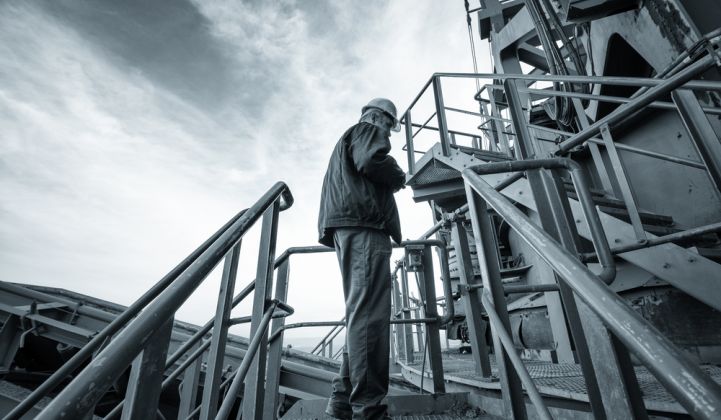Say you're a member of the world community and a signee committed to the Paris Agreement’s long-term goals. You'd probably want to track your progress and assess your results.
You'd essentially be asking, "How well is the human race doing in its quest to transform its energy mix away from polluting sources?"
The answer is not so well, according to a new report from the IEA, Tracking Clean Energy Progress 2017, which looked at 26 technologies and their performance in meeting the 2°C Scenario (2DS) in 2025. (The 2DS is defined as "an energy system pathway and a CO2 emissions trajectory consistent with at least a 50 percent chance of limiting the average global temperature increase to 2°C by 2100.")
Only three of the 26 technologies are on track to meet that goal, while eight are significantly off-track and will need strong policy corrections to hit the 2DS.
The bright spots are:
- Solar and onshore wind, combined into one category as mature variable renewables, had strong annual capacity growth and record-low long-term contract prices
- The global stock of electric vehicles grew to 2 million, with 750,000 EVs sold in 2016
- Energy storage reached almost 1 gigawatt in 2016 (excluding pumped hydro)
Failing grades go to:
- Coal still had more than a 40 percent share in 2016. Meeting the target will mean retiring inefficient technologies and equipping plants with carbon capture and storage (CCS).
- CCS has stalled. IEA reports: "The pipeline of projects has effectively stalled due to lack of new investment decisions," as well as economics that do not pencil out.
- Advanced biofuels would need "a 25-fold scale-up in production volumes" by 2025 to be on track with the 2DS target.
- The report points out that most countries do not have building energy-efficiency codes in place.
Somewhere in the middle:
- Nuclear power saw 10 gigawatts of capacity additions in 2016, but only 3 gigawatts of new builds.
- Gas-fired power generation will need to progress in efficiency and flexibility to better integrate renewables and displace coal in the short term.
Reminiscent of EPRI's prism chart, IEA's projections depend heavily on renewables, efficiency and CCS.

For those countries remaining in the Paris Agreement, this type of tracking lets the community assess its progress and allows legislators to focus on technologies that are actually growing and making an impact.
The report's findings are sobering, but also show that there is still time to correct the course with purposeful legislation and massive focused investment.



